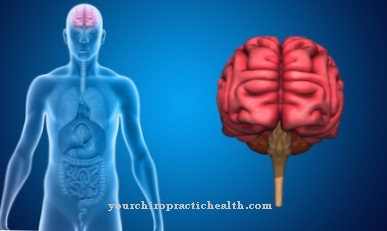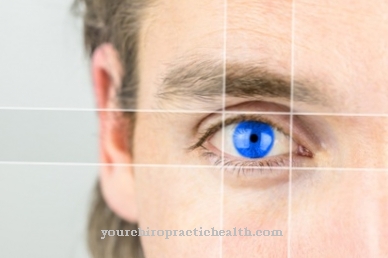The Self-awareness is the anchor point for self-confidence and plays a role above all in psychology. Distortions in self-perception can trigger symptoms such as anorexia or dysmorphophobia, for example. Alienation of self-perception often leads to social withdrawal and a feeling of senselessness.
What is Self Perception?

Psychology understands the concept of self-perception as the perception of one's own person. The sum of all self-perceptions forms a person's self-image. Together with self-observation, self-perception is a basic requirement for building awareness and self-awareness. The perception of others is to be distinguished from self-perception. The perception of oneself by others and the self-perception are never exactly the same.
The concept of self-awareness can be either inward or outward. Inwardly directed self-perception in medicine usually means the perceptions of the proprioceptors, i.e. the sensory perceptions of the deep or muscular sense, which are also included under the term body perception. Outwardly directed self-perception, on the other hand, is formed by the impressions of the exterior receptors. It encompasses all information about yourself that the visual system, the sense of hearing and the sense of smell permit.
Self-perception is highly relevant in psychology with regard to various clinical pictures. In this context, the differentiation between body scheme and body image plays an increased role.
Function & task
Self-perception is an important building block for one's own health and if it is distorted it has an impact on both mental and social life. Thanks to their sensory structures, people perceive their own bodies. The neurophysiological body schema is a theoretical construct that describes this act of objective self-awareness. The body schema is thus composed of the perceptions of the tactile, vestibular, proprioceptive, acoustic and visual information of one's own perceptual apparatus.
The body scheme is based on learning experiences and consists of qualities such as body orientation, body expansion and body knowledge. This means that, thanks to proprioceptors and the learning experience, people can perceive their own height, their own dimensions and the structure or function of their body.
The so-called body image contrasts with this neurophysiological construct as a purely psychological construct. The body schema is relatively objective and does not depend on one's own mind in the sense of internal processes, but is shaped solely by objective sensory perceptions of one's own sensory systems.
The psychological body image, on the other hand, is subjective and depends on the mind and thus on the internal processes of the individual. These inner processes are above all thoughts and feelings about the perceptions of oneself. The body image is the mental attitude towards one's own body and is also referred to as the term body awareness.
The assessment of one's own attractiveness, for example, is an important quality of body image. This assessment is rarely independent of the assessment of other people. The evaluation by others therefore mostly plays into the mentally subjective body image. If there are strong discrepancies between the physiological body scheme and the psychological body image, then this can disrupt self-perception.
Accepting other people's images as one's own is one of the most important phenomena in this context. Distortions, denials and repression can arise as a result and trigger self-delusions, such as those present in anorexia.
You can find your medication here
➔ Medicines to calm down and strengthen nervesIllnesses & ailments
Due to discrepancies between the objective body schema and the subjective body image, self-perception can trigger serious illnesses which, like anorexia, have both psychological and physiological consequences. Most of the time, ideal images with regard to one's own shape are the focus of such diseases.
In addition to your own ideal images, you can also use someone else's images and over time feel like your own ideal images. In this case, those affected sometimes also take on false external perceptions of their own body as self-perceptions and on this basis develop ideal images that affect their own body.
They are often afraid of being caught chasing the ideal. This fear stems from a feeling of shame not yet conforming to ideal images. Since self-perception plays a major role in forming one's own identity, distortions and other alienations of self-perception also distort the perceived identity of those affected.
A disturbed self-perception not only plays a role in diseases such as anorexia, but can also manifest itself in diseases such as social phobia. In the context of this disease, the so-called spotlight effect often occurs. Those affected feel permanently exposed to other people's observation.
Disturbed self-perception also plays a role in diseases such as dysmorphophobia. Patients feel unattractive and develop self-rejection and self-hatred. Panic fear of rejection and the reactions of other people interact with it. Feelings of envy and loneliness, as well as the fear of disappointing others, are also important symptoms of reduced self-esteem in the context of dysmorphophobia. The ugliness of those affected only exists in their own eyes, but restricts their social life and often even leads to complete withdrawal from social life. A feeling of senselessness arises.



.jpg)









.jpg)

.jpg)
.jpg)











.jpg)